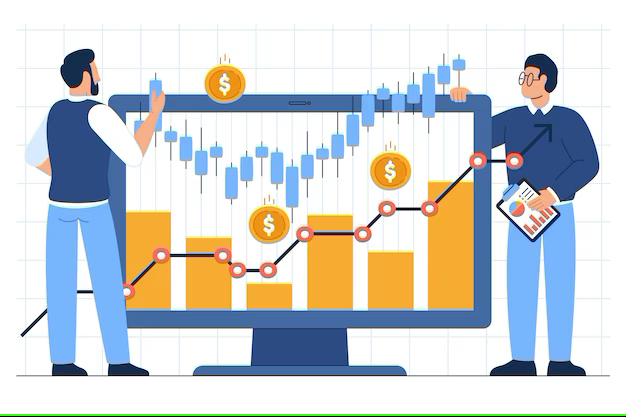Every investor must have come across the term “India VIX”, but what does it mean? India VIX stands for India Volatility Index. Before going into the details of this index, we must understand what market volatility even means and the risks associated with it.
Volatility is an investment terminology that describes periods of unpredictable movements in the securities market. These sharp price movements are not necessarily associated with the decline in prices; there might also be sudden price rises.
In statistical terms, volatility can be described as the standard deviation of a market over a given period. If the price fluctuates significantly in a short period, the market is supposed to be highly volatile. If the price remains relatively stable, it is said to be less volatile.
But what causes these fluctuations?
There can be a plethora of reasons; some of them are:
- Government decisions on trade and legislation.
- Economic reports, including inflation data, quarterly GDP, consumer spending figures, etc.
- Industry-specific factors like a weather event in a major oil-producing region can increase international oil prices.
- Positive or negative company performance.
While volatility might seem scary initially, it is a normal part of long-term investing. By accepting volatility as an inevitable part of investing, investors can be better prepared and more likely to react rationally.
What exactly is India VIX?
India VIX or India Volatility Index is a volatile index used to measure the anticipation of volatility in the near term, i.e., 30 days. In India, the index was first introduced by NSE in 2003 to help investors better understand the market before making their next investment or to keep track of their existing investments.
India VIX is nothing like the price index.
It is imperative to understand that India VIX is not similar to price indices like the NIFTY FIFTY in any way. While the price indices are calculated by considering the price movement of the underlying equities, the volatile index is determined by considering the order book of the underlying index options and is represented in percentage form.
How is the value for India VIX derived?
The value of India VIX is derived using the Black & Scholes (B&S) Model. It is an equation used widely to price option contracts and requires five input variables: the strike price of an option, the current stock price, the time to expiration, the risk-free rate, and the volatility. Bid-ask spreads of NIFTY futures contracts traded on the NSE’s F&O segment are used to calculate the India VIX. Volatility is directly proportional to the India VIX level; hence a higher index level indicates greater volatility.
For example, a VIX value of 17 for India indicates that over the next 30 days, traders anticipate a 17% increase in volatility. That is, during the next 30 days, investors expect the NIFTY to fluctuate between +17 and -17 per cent from its current value.
Further, historical patterns imply an inverse relationship between NIFTY and India VIX. When the India VIX index drops, the NIFTY tends to increase, and vice-versa.
The theoretical value of the VIX fluctuates between 15 and 35. Low volatility would be indicated by a reading of 15 or less, while a reading of 35 or more would indicate high volatility.
What elements are considered while calculating the India Volatility Index?
The volatility index, or India VIX, is calculated by taking into account four key factors: time to expiration, interest rates, forward index level and bid-ask. Let us discuss in the following points:
- Time of Expiration – To attain the level of precision demanded by the traders, the time to expiry is computed in minutes instead of taking days.
- Interest Rates – When calculating the risk-free interest rate for the respective expiration months of the NIFTY options contract, the applicable 30-to-90-day tenure rate is considered.
- Forward Index Level – The forward index level determines the out-of-the-money options contract that is considered when computing the volatility index. It also determines the at-the-money strike, which aids in choosing the said options contract.
- Bid-Ask – The ATM strike price, accessible at a little lower level than the forward index level, serves as the strike price for the NIFTY option contract. India VIX is calculated by taking into account the bid and ask prices for the options contracts.
How to utilize India VIX?
- The VIX accurately measures market risk for stock traders. It shows intraday and short-term stock traders whether market volatility is rising or falling. They can adjust their strategy accordingly.
- Long-term investors also benefit from VIX. Short-term volatility rarely bothers long-term investors. Institutional investors and proprietary desks have risk and MTM loss limits. They can hedge with puts when the VIX rises to play the market both ways.
- Options traders can leverage VIX too. Volatility usually determines option purchases. Options buyers win more when volatility rises. Option sellers will benefit from time value waste as the VIX falls.
- VIX accurately gauges index movement. Since VIX’s debut, VIX and NIFTY have had a negative association. This knowledge is helpful for index trades.
- Portfolio and mutual fund managers utilize VIX regularly. They can increase their exposure to high beta equities when the VIX peaks and low beta stocks when it bottoms.
India VIX has most definitely proven to be a dependable tool to asses market volatility and is helping alleviate the fears of investors and stock traders.





